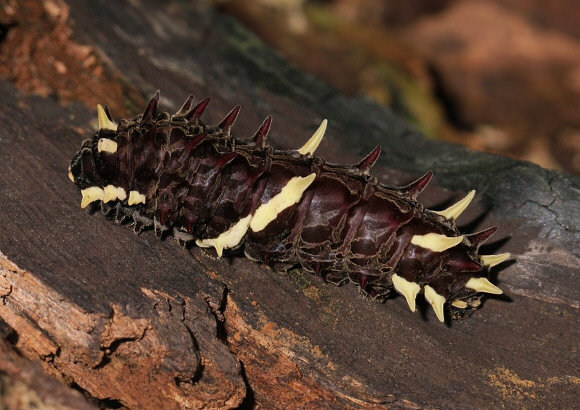
Introduction
The family Papilionidae is comprised of about 600 species, found throughout the world in almost every environment including deserts, mountains, grasslands, tropical rainforests, temperate forest, meadows, marshes and coastal dunes.
There are 3 subfamilies. The Parnassiinae comprises about 50 species, known as Apollos, which breed in mountainous areas of the northern hemisphere. The Papilioninae comprises of about 550 species of worldwide distribution, and includes the Swallowtails, Dragontails and the giant Birdwings of south-east Asia. The other subfamily Baroniinae consists of a single species Baronia brevicornis which is endemic to the mountains of western Mexico.
There are 33 species in the genus Parides, which is the neotropical “sister” genus of the Troides Birdwings of the Oriental region.
Parides anchises occurs in most of the tropical and subtropical areas of Central and South America, from Mexico to Bolivia. There are 20 subspecies.
Habitats
This species is a denizen of lowland rainforests, and is found at altitudes between about 200-800m.
Lifecycle
The caterpillars of all Papilionidae bear tubercules when in their first instar. In some genera such as Papilio and Eurytides these are absent in the mature larva, but in others including Troides, Battus and Parides they develop into soft fleshy appendages.
All Papilionidae larvae are equipped with an extrusible forked appendage – the osmaterium, which is situated behind the head. This is everted if the larva is molested, and gives off a noxious odour containing isobutyric acid, which is believed to be used as a defence against ants.
The caterpillar illustrated above is of subspecies nephalion, which is found in southern Ecuador, eastern Peru and in Mato Grosso state, Brazil.
Adult
Both sexes are typical of the genus Parides, having black wings, with the hindwings marked with pink. In some subspecies such as P. anchises foetterlei the pink markings are contiguous and form a single large patch, while in others including nephalion they are greatly reduced, and separated into a series of smallish spots. The pink makings are always more extensive in the females, which also have a suffused white patch in the centre of the forewings. Males on the other hand have a large patch of brilliant metallic green scales on their forewings, and are a beautiful sight when seen fluttering gently around flowering bushes.
